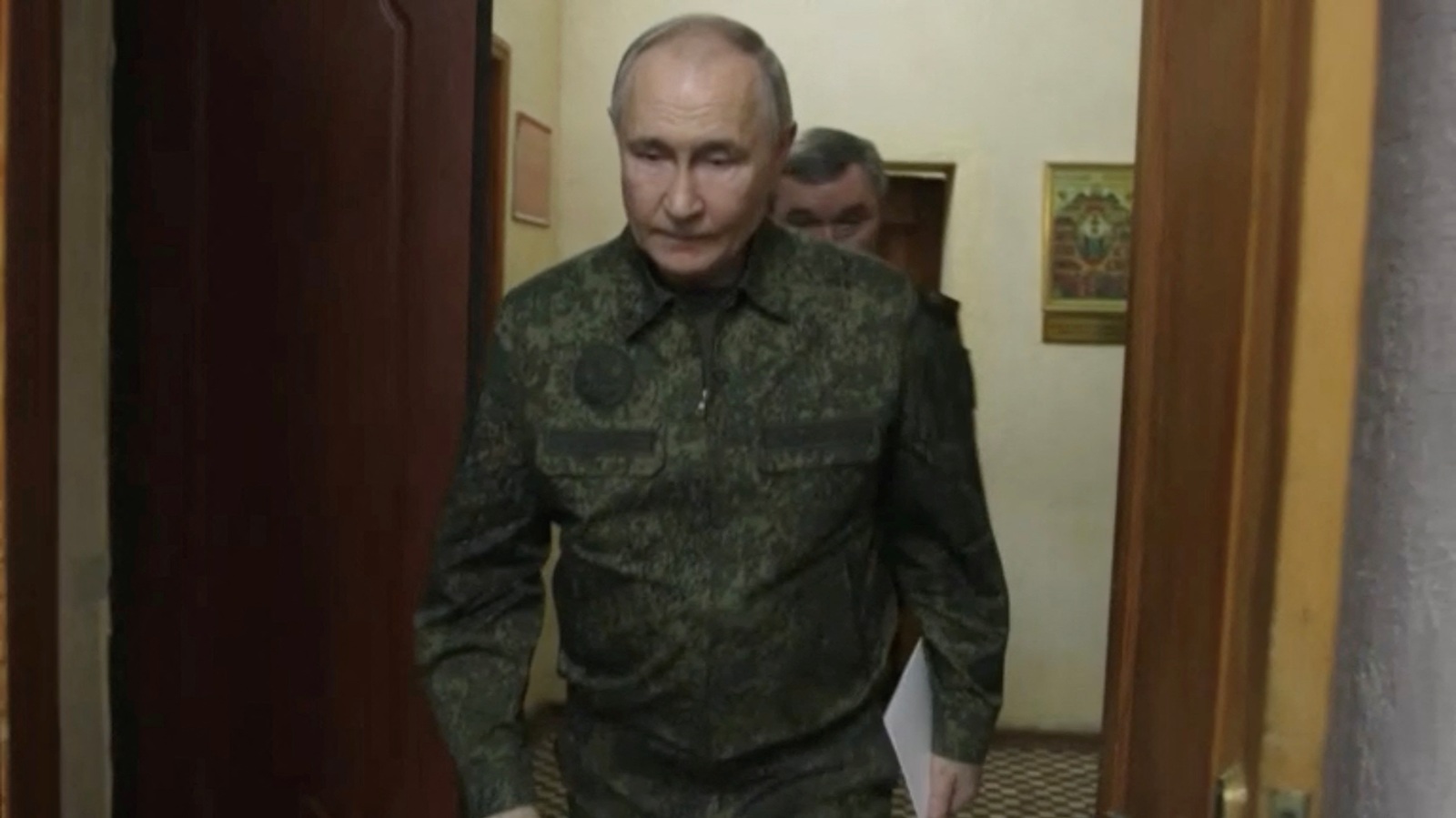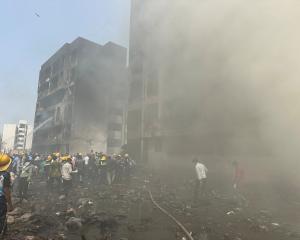
Meanwhile, Russia has presented the United States with a list of demands for a deal to end the war and reset relations with Washington, according to two people familiar with the matter.
It is not clear what exactly Moscow included on its list or whether it is willing to engage in peace talks with Kyiv prior to their acceptance. Russian and American officials discussed the terms during in-person and virtual conversations over the last three weeks, the people said.
They described the Kremlin's terms as broad and similar to demands it previously has presented to Ukraine, the US and NATO.
Those earlier terms included no NATO membership for Kyiv, an agreement not to deploy foreign troops in Ukraine and international recognition of Russian President Vladimir Putin's claim that Crimea and four provinces belong to Russia.
Russia, in recent years, also has demanded the US and NATO address what it has called the "root causes" of the war, including NATO's eastward expansion.
US President Donald Trump is awaiting word from Putin on whether he will agree to the truce that Ukrainian President Volodymyr Zelenskiy said on Tuesday he would accept as a first step toward peace talks.
Putin's commitment to a potential ceasefire agreement is still uncertain, with details yet to be finalised.
Some US officials, lawmakers and experts fear that Putin, a former KGB officer, would use a truce to intensify what they say is an effort to divide the US, Ukraine and Europe and undermine any talks. The Russian embassy in Washington and the White House did not immediately respond to a request for comment.
Visit to Kursk
As Moscow considered the plan, Putin visited Russia's Kursk region for the first time since Ukrainian troops captured part of it last year, Russian media reported.
Kyiv's forces have been on the verge of losing that foothold, which Ukraine hoped to use as leverage in any peace talks with Moscow. With Putin's visit highlighting Russian claims of success in Kursk, Valery Gerasimov, head of the Russian General Staff, told the Kremlin leader that Ukrainian troops were surrounded, according to the reports.
But Ukraine's top army commander Oleksandr Syrskyi said on Facebook that fighting continued on the outskirts of Sudzha town in Kursk and Kyiv's troops would continue operating there "as long as appropriate and necessary."
The US on Tuesday (local time) agreed to resume weapons supplies and intelligence sharing after Kyiv said at talks in Saudi Arabia that it was ready to support a ceasefire proposal.
The Kremlin said it was carefully studying the results of that meeting and awaited details from Rubio and White House National Security Adviser Mike Waltz. Later on Wednesday, the White House said Waltz had spoken with his Russian counterpart.
Speaking to reporters when his plane refuelled in Ireland, Rubio said on Wednesday: "Here’s what we’d like the world to look like in a few days: Neither side is shooting at each other, not rockets, not missiles, not bullets, nothing ... and the talking starts."
In Washington, Trump told reporters at the White House that he had received "positive messages" about the potential for a truce in the three-year-old conflict, without giving details.
After Russian forces made gains in Ukraine in 2024, Trump reversed US policy on the war, launching bilateral talks with Moscow and suspending military assistance to Ukraine, demanding that it take steps to end the conflict.
"Rubio and Waltz said that they would pass on detailed information to us through various channels about the essence of the conversation that took place in Jeddah. First, we must receive this information," Kremlin spokesman Dmitry Peskov said.
Rubio said the United States was hoping for a positive response, and that if the answer was "no" then it would tell Washington a lot about the Kremlin's true intentions.
He said that Europe would have to be involved in any security guarantee for Ukraine, and that the sanctions Europe has imposed would also be on the table.
After a meeting of five European defence ministers, British defence minister John Healey on Wednesday told reporters that work was accelerating on a "coalition of the willing from Europe and beyond" to support Ukraine. French Defence Minister Sebastien Lecornu said about 15 countries had expressed interest.
Asked whether Russia could accept the ceasefire unconditionally, Rubio said: "That's what we want to know - whether they're prepared to do it unconditionally."
In Kyiv, Zelenskiy hailed this week's meeting in Saudi Arabia between US and Ukrainian officials as constructive, and said the potential ceasefire with Russia could be used to draft a broader peace deal.
Ukraine set to lose foothold
Russia's invasion of Ukraine in early 2022 has left hundreds of thousands of dead and injured, displaced millions of people, reduced towns to rubble and triggered the biggest confrontation between Moscow and the West in six decades.
During Putin's visit, Gerasimov told him Kyiv's plan in Kursk had failed and Russian forces had regained 1100 square kilometers of territory. Putin called for Kyiv's troops in Kursk to be completely defeated.
Russian media group Agentstvo, which analysed Ukrainian open-source maps, earlier said that Ukraine controlled just 150sq km in Kursk. A Ukrainian source said last year it had controlled 1376 sq km of Kursk.
Putin has repeatedly said he is ready to talk about an end to the war and Trump says he thinks Putin is serious, though other Western leaders disagree.
Reuters reported in November that Putin was ready to negotiate a deal with Trump, but would refuse to make major territorial concessions and would insist Kyiv abandon ambitions to join Nato.
Konstantin Kosachev, chairman of the international affairs committee of the Federation Council, the upper house of Russia's parliament, said on Telegram that Russia's advances in Ukraine must be taken into account in any deal.
"Real agreements are still being written there, at the front. Which they should understand in Washington, too," he said.
In June, Putin set out his terms for peace: Ukraine must officially drop its Nato ambitions and withdraw its troops from the entirety of four Ukrainian regions claimed and mostly controlled by Russia, which holds just under a fifth of Ukraine.
Ukraine says the regions have been annexed illegally and that it will never recognise Russian sovereignty over them.
The conflict in eastern Ukraine began in 2014 after a Russia-friendly president was toppled in Ukraine's Maidan Revolution and Russia annexed Crimea, with Russian-backed separatist forces then fighting Ukraine's armed forces in the east.











